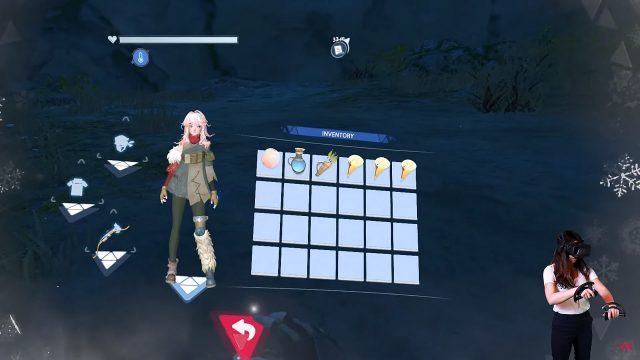In development by NetEase Games, NOSTOS is an online RPG due to launch later this year on PC with optional VR support. The game recently had a closed-beta period which gives a good look at how things are shaping up with less than four months before launch. While Zelda: Breath of the Wild inspiration is clear from the outset, the bolted-on VR gameplay speaks to a broader issue of ‘VR-optional’ game design.
The modern open-world game is often about covering vast distances on foot, collecting resources from disparate locales, crafting items to aid in your survival, and roaming the lands to fight baddies, complete quests, and collect loot. Nostos has this going in full force, drawing some clear mechanical and aesthetic inspiration from Zelda: Breath of the Wild.
The big problem is that these open-world game design themes—unless radically adapted with the VR player in mind—are nearly the polar opposite of what’s been found to make for compelling VR gameplay.
Our friends over at the YouTube channel Cas and Chary VR posted a 15 minute segment of gameplay from the Nostos closed beta, but unfortunately it doesn’t give much confidence that NetEase Games has been able to overcome the pitfalls of ‘VR-optional’ game design.
Spending time reading textual instructions, making quest and dialog selections by clicking floating buttons, ‘crafting’ via menus, ‘building’ by pointing at the ground and pressing a button, and especially sliding along the ground with stick-based locomotion for minutes at a time with nothing to do, is all a dull affair in VR. And let’s not forget the moments where immersion is broken as your perspective suddenly pops into third-person so you can see a 15 second text-based cutscene before appearing back inside your body.

What’s more, with combat being such an essential component of this flavor of open-world game, VR needs more than ‘slide around with artificial locomotion while waggling your weapon at the enemy’.
Though much of the game’s menu-based systems are simply projected into floating windows attached to your controllers, some of the game’s interactions have indeed been ‘VR-ified’ (like climbing with motion controls, swinging an axe to chop down a tree, and shooting a bow and arrow by pulling the string). But it’s clear that these functions are bolted onto a system that was made from the start for non-VR gameplay, and risk becoming more tedious than interesting by the time you’ve chopped down your 20th tree, climbed your 20th cliff, or killed your 20th enemy, let alone the 500th, as these types of games often expect players to do over hours of gameplay.
The problem here is not that the overall concept of an open-world game cannot be brought to VR, but that doing so in a meaningful way effectively requires designing two separate games—which is not only heaps more work, but comes in conflict with a game like Nostos that wants to support both non-VR and VR players in the same, balanced game.
Contrast all of this with the likes of a VR native game like Until You Fall which (outside of the open-world nature) has similar systems in concept (combat, inventory, upgrades, skills, etc), but they are built in fundamentally different ways which make them rich, interesting, and interactive in VR.
A promising upcoming VR native title, Stormland, takes VR design to heart in the open world context. Instead of slowly sliding across large landscapes with nothing to do until you reach your next quest marker, the regions between meaningful spaces are covered in clouds which players quickly fly across using interesting motion input, retaining a sense of geographic scale while reducing the tedium of long stretches of locomotion.
This method of movement also means players can launch aerial attacks once they reach their destination, and once they’ve finally come down on solid ground, they have interactive means of maneuvering around enemies like jumping, climbing, and gliding, all largely driven with motion input.
I will of course reserve judgement on Nostos until we see the final product. But with less than four months before the project is set to launch, I’m not holding my breath that the VR experience will be enough for most to bother putting the headset on more than a few times before just choosing to stick to the flat screen. We’ve seen a handful of VR-optional games before, but there’s yet to be one which has truly delivered. I would argue that a game like Nostos is better off focusing all of its development efforts on non-VR or VR; splitting the difference will only make for a sub-par version of each.






